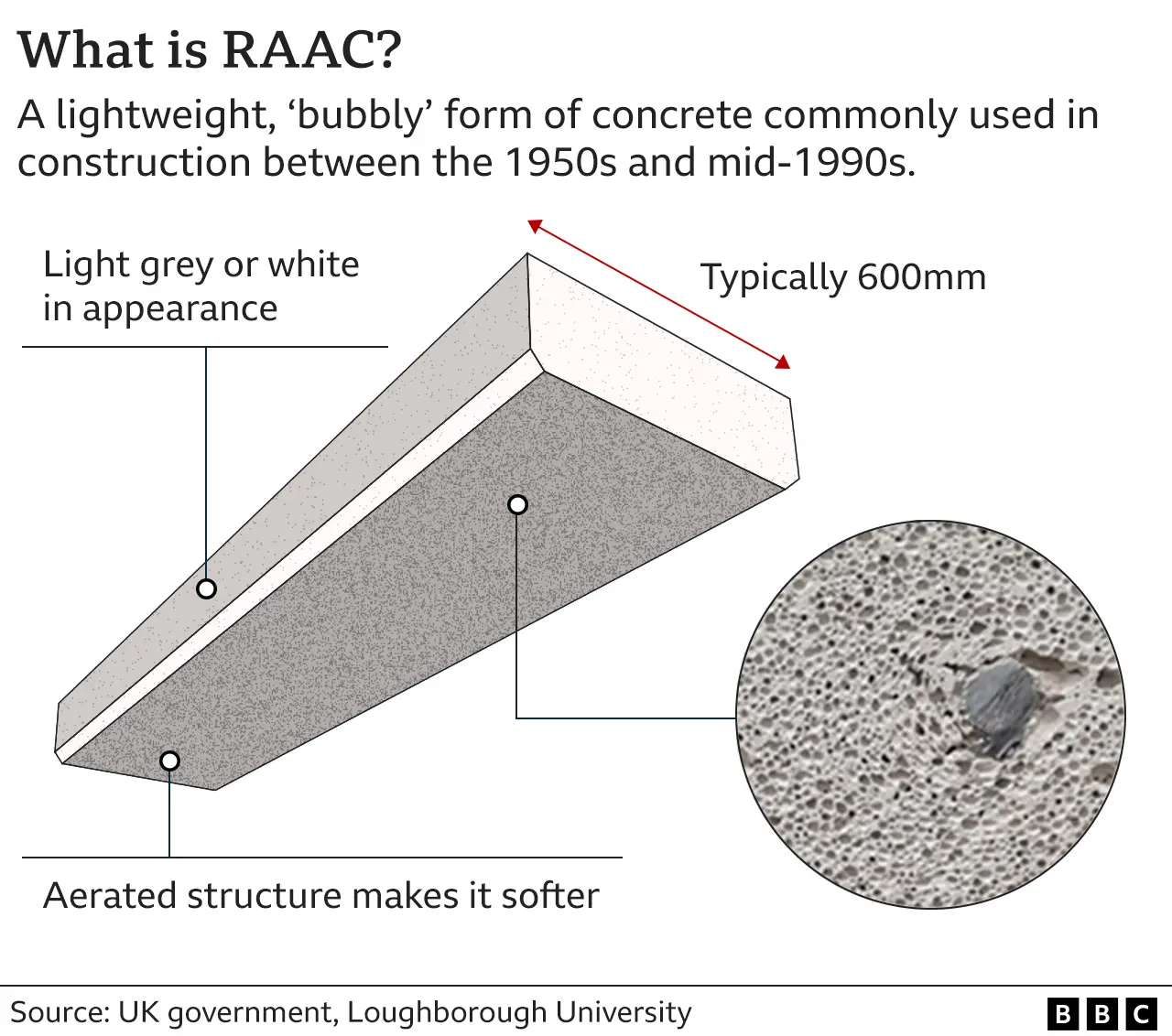No immediate concrete risk to pupils in Scottish schools, says minister
There is no immediate risk to pupils and staff in Scottish schools from unsafe concrete, a government minister has said.
A total of 35 council-run schools have been found to contain reinforced autoclaved aerated concrete (RAAC).
More than 100 schools in England have been told to close areas of their buildings that have RAAC.
All local authorities across Scotland are due to report the findings of structural assessments next week.
And Wellbeing Economy Secretary Neil Gray has insisted that, at this point, there is nothing to suggest that school safety has been compromised.
He told BBC Scotland's The Sunday Show: "Many assessments and checks have been done already. There is no immediate risk to people using those buildings.
"If necessary, mitigations will be put in place where RAAC is in place and there is a concern around it to ensure the ongoing safety of that building and the people using it.
"There is no reason to believe that the safety concern has changed in the previous weeks."

First Minister Humza Yousaf said on Saturday that the Scottish government would not immediately follow the UK government in closing buildings or ordering the use of temporary accommodation if RAAC was discovered.
He said: "We don't think at this stage that there's any need for any schools to shut."
The Scottish government has previously stressed that pupils would not be taught in the parts of buildings where the concrete is considered a risk.
Neil Gray told The Sunday Show that NHS hospitals and other public buildings were also being included in "risk-based assessments".
It emerged in July that 254 NHS Scotland buildings contained RAAC.
'Deep into the structure'
The government minister said: "All the checks we are doing are about making sure that any mitigations that are required to ensure the buildings' safety can take place.
"Obviously there are checks ongoing, including inclusive checks, because some of this material is going to be deep into the structure of the buildings. That takes time to carry out.
"There have also been desk-based assessments of knowing where RAAC is and taking a risk-based approach on understanding where the integrity of that particular structure could be compromised."
RAAC is a lightweight "bubbly" form of concrete used widely between the 1950s and mid-1990s - usually in the form of panels on flat roofs, as well as occasionally in pitched roofs, floors and walls.
It is less durable than standard concrete and has a limited lifespan of about 30 years.
Figures released to the Scottish Liberal Democrats in May suggested that a total of 37 Scottish schools had been found that used the concrete.
Scottish Lib Dem leader Alex Cole-Hamilton has said the government should have done far more over the summer to assess the scale of the problem and called for a ministerial statement.
Private property owners
He also wants the government to set out an immediate plan for letting private property owners, both residential and commercial, know about the risks posed by RAAC and what action needs to be taken.
Mr Cole-Hamilton said: "It's not good enough for the Scottish government to simply say that it's a matter for business owners to ensure their premises are safe.
"If concrete beams in a block of flats collapse, the idea the government could simply go 'that's not our problem' is ridiculous.
"This concrete was in use for decades."
